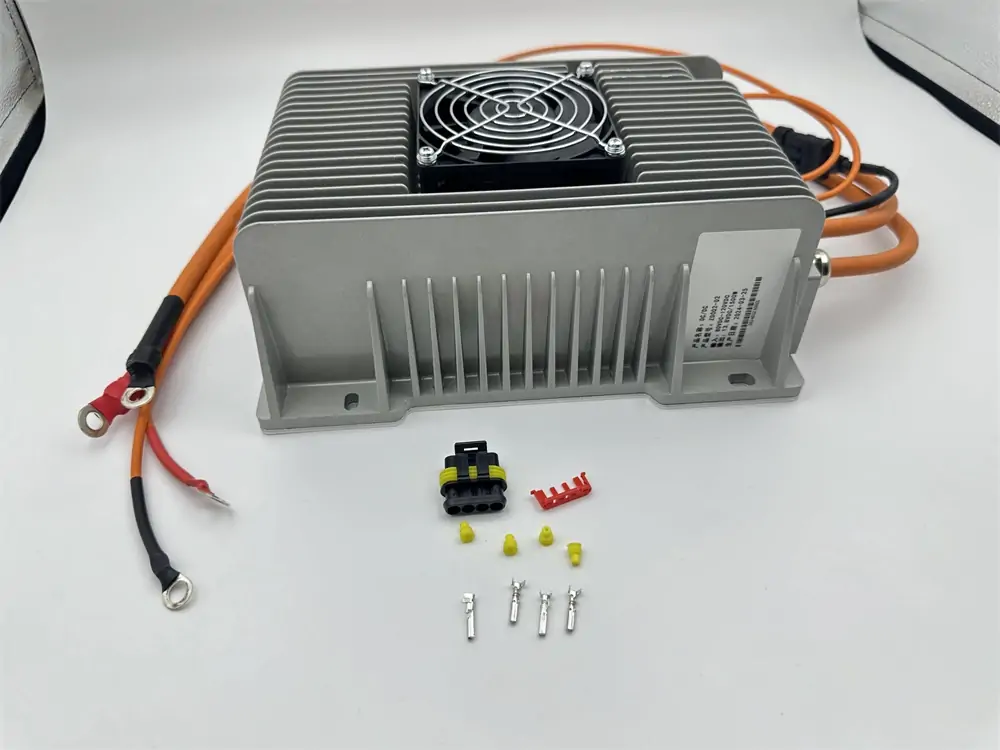
DC-to-DC converters are essential devices used to convert direct current (DC) from one voltage level to another, commonly found in automotive applications. They serve as intermediaries between systems operating at different voltage levels within a vehicle.
In traditional automotive electrical architectures dating back to the 1950s, control circuitry fulfilled the role of DC-to-DC converters within the 12V system dominant at the time. As vehicle technology evolved, introducing features such as cruise control in the 1950s, emission control systems in the 1970s, and electrical centers in the 1990s, the complexity of electrical architectures increased. DC-to-DC converters facilitated this growth by stepping down power from the 12V battery to power lower-voltage systems like instrumentation panels, entertainment systems, LED lighting, and sensors, which often require as little as 3.3V. Even in today's vehicles, both internal combustion engine vehicles and battery electric vehicles (BEVs) rely on low-voltage DC-to-DC converters as integral components of their control circuitry.
The advent of BEVs introduced higher electrical power requirements, necessitating more robust DC-to-DC converters. High-voltage systems exceeding 60V, with BEV batteries typically ranging from 400V to 800V, require step-down conversion to power components such as air conditioning units and various electronics throughout the vehicle. Conversely, step-up conversion may be needed, such as when charging a 400V battery from an 800V charging station.
The proliferation of software-enabled features like active safety systems, connectivity, and infotainment has further complicated low-voltage architectures. BEVs must balance powering the vehicle's wheels with supplying low-voltage devices, all while meeting the reliability and safety demands of autonomous driving and advanced driver-assistance systems.
High-voltage DC-to-DC converters, essential for BEVs, are larger and heavier than their low-voltage counterparts due to increased shielding requirements against electromagnetic interference. EV designers seek to minimize size and weight to extend vehicle range, driving the adoption of higher power density converters, measured in kilowatts per unit volume.
Efficiently stepping down 400V or 800V to 12V demands DC-to-DC converters with power ratings ranging from 700W to 4kW, or even up to 12kW for commercial vehicles. Balancing space constraints with safety and efficiency considerations poses a significant challenge. Some automakers consolidate the larger battery with a sophisticated DC-to-DC converter, eliminating the need for a separate 12V battery, thereby reducing weight, cost, and maintenance.
Effective software is crucial for optimizing conversion efficiency, requiring a comprehensive understanding of the entire vehicle architecture. While high-voltage components are relatively new in the automotive industry, Aptiv leverages decades of experience to provide vehicle electrification solutions that meet OEMs' needs. Future vehicles must be energy-efficient and feature-rich to accommodate functions like over-the-air updates, cybersecurity, autonomous
Next:Australian Energy Market Operator grants milestone GPS approval to Waratah Super Battery
Previous:How Long Does a Lithium Battery Last?